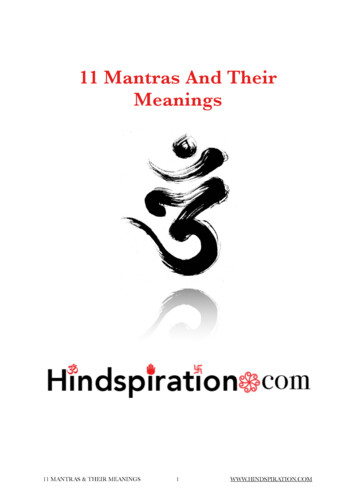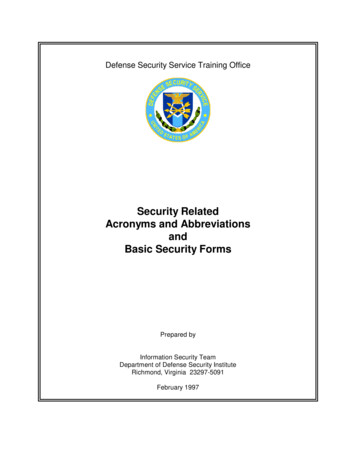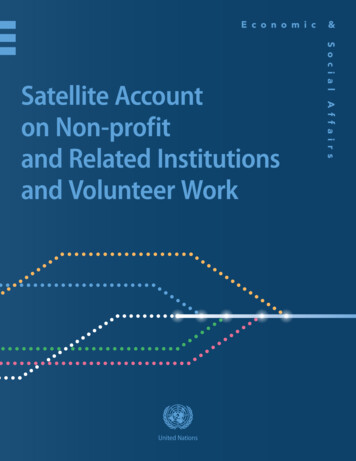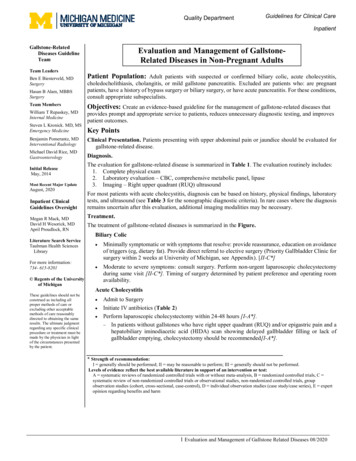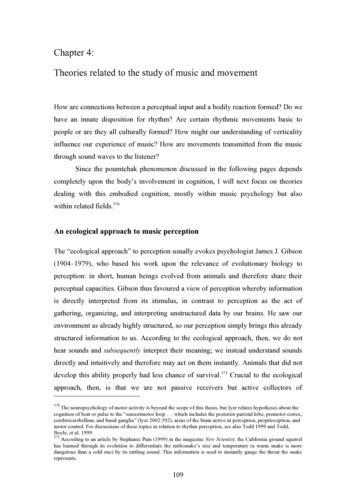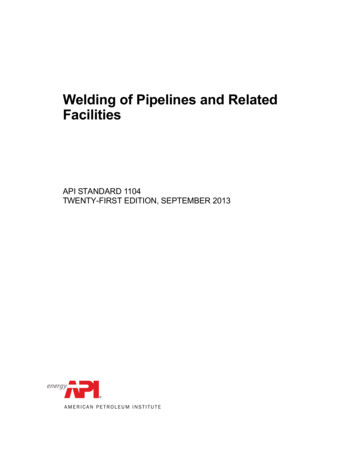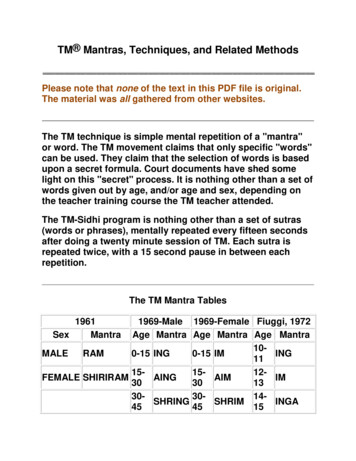
Transcription
TM Mantras, Techniques, and Related MethodsPlease note that none of the text in this PDF file is original.The material was all gathered from other websites.The TM technique is simple mental repetition of a "mantra"or word. The TM movement claims that only specific "words"can be used. They claim that the selection of words is basedupon a secret formula. Court documents have shed somelight on this "secret" process. It is nothing other than a set ofwords given out by age, and/or age and sex, depending onthe teacher training course the TM teacher attended.The TM-Sidhi program is nothing other than a set of sutras(words or phrases), mentally repeated every fifteen secondsafter doing a twenty minute session of TM. Each sutra isrepeated twice, with a 15 second pause in between eachrepetition.The TM Mantra Tables1961SexMantra1969-Male 1969-Female Fiuggi, 1972Age Mantra Age Mantra Age Mantra10MALERAM0-15 ING0-15 IMING11151512FEMALE SHIRIRAMAINGAIMIM303013303014SHRINGSHRIMINGA454515
46 SHIAM 46 242525
243030353540404545505055556060 SHIRIN 24- SHIRING30 IRINGKIRING5050KIRIMKIRIN5555SHIAMSHIAM60SHIAM 60 SHIAMA A2426263030353540404545505055556060 2426263030353540404545505055556060 2425262930343539404445495054555960 tes: The year at the top of each column indicates the yearthe teacher was trained."Age" is that of the initiate at the time of learning thetechnique.See the TM Checking Notes and Steps to Initiation for detailson the initiation and checking rituals.From: http://minet.org/mantras.htmlNote: These "steps" are memorized by prospective TMinitiators during the last 3 to 5 days of Teacher TrainingCourse, Phase III (TTCIII). Prior to being made teachers,course participants (CPs) are tested by course leaders for
absolute, verbatim knowledge of this procedure, its wording,and the precise time intervals as quoted below. CPs mustpass such a test three times without mistakes or evenhesitations in order to be eligible to become TM teachers.The dictated text is represented by course leaders as being adirect quote from Maharishi Mahesh Yogi -- includingidiosyncratic grammar and phrasing -- and is said to be theonly process by which his Transcendental Meditation may betaught successfully. According to the restrictions imposedby TTCIII course leaders, they may only be "inscribed inconsciousness" -- that is, memorized from dictation -- andmay never be written down, in order to preserve the "purityof the teaching."The text below represents the "steps" as they were taught inthe mid-to-late 70s and may differ somewhat from earlier andlater TTCIII courses. They have been transcribed from aqualified, practicing TM teacher's memory and thencompared with several other TM initiators' memories toconfirm the precise wording and timed intervals.The striking similarities to the " Checking Notes" and " 3Days Checking, Group Check"procedures have been cross-referenced.Teacher has prepared an altar to Guru Dev, lit a candle andincense, and spread camphor, sandalwood paste, rice, andother ritual offerings in the appropriate ritual containers priorto student's entrance. Two comfortable chairs are alsoprovided directly in front of the altar, leaving room forteacher and student to stand before the altar.The initiation room is always prepared behind a closed door
so that no student may see the altar before entering.Maharishi has said the element of surprise is important forinsuring a smooth and deep initiation experience for thestudent.When the student enters the room, teacher accepts fruit,flowers, handkerchief, and initiation form from student -- theitems are usually carried in a wicker basket by the student.Teacher briefly glances at initiation form to check the criteriafor mantra selection (age and/or sex) and to preserve theillusion of personal mantra selection. Then the teacherbegins speaking to the initiate, as they both sit in front of thealtar:"In this personal instruction, you will receive a mantra, orsound, and then the procedure how to use it properly. Onceyou know the mantra or sound, by tradition, we keep it to ourself. Also the actual procedure of meditation that you receiveis to be kept private. For maximum results, all that we learnin private, we keep private. Do you agree?"Teacher must wait for student's assent before continuing."Now, please come."Teacher rises, stands in front of altar, and indicates wherestudent should stand.".stand here. You would like to have a flower?."Teacher offers one of student's flowers back to student. Thestudent must take and hold it for the ceremony to continue.".and witness the ceremony which I perform in gratitude tothe tradition of Masters who have given us this wisdom ofintegration of life."This is a picture of Guru Dev, His Divinity SwamiBrahmananda Saraswati, Maharishi's Master, from whom wehave this meditation.
"Now, I'll begin -- and you just witness."Teacher performs puja.At the end of the puja, the teacher sinks to his knees in frontof altar while sweeping his right arm -- indicating to initiatethat he, too, should kneel. The ceremony may continue if theinitiate does not kneel, or "bow down." After a moment, theinitiator slowly rises, slowly and softly repeating the initiate'smantra -- without explaining to the initiate that this is hismantra. For the purposes of testing on TTCIII, beforeprospective teachers actually are given their list of TMmantras, the word "flower" was substituted."Flower, flower, flower, flower."The teacher beckons to the individual to repeat with handmotions. If he doesn't begin repeating the mantra, then theteacher says:"Repeat: Flower, flower, flower, flower."The teacher ceases repeating the mantra, indicating withhand motions that the student should continue. The teacherwaits for the student to repeat the mantra 3 or 4 times on hisown, then motions him to sit in the provided chair. Theteacher might say:"Continue."(15 seconds)"Now, close the eyes and continue."(wait 15 seconds)"More quietly."(15 seconds, the teacher softens the voice each time "morequietly" is repeated)
"More quietly."(15 seconds)"More quietly."(15 seconds)"Now, mentally -- without moving tongue or lips."(wait 15 seconds)"Open the eyes."Wait for him to open the eyes."It's easy? Mental repetition is not a clear pronunciation, it'sa faint idea. And if at any time you seem to be forgetting themantra, don't try to hold on. Let it go. Now, close the eyesand continue."(2 minutes)"Open the eyes."Wait for him to open the eyes."It's easy? You feel some relaxation? This is TranscendentalMeditation. See, how simple it is? It goes almost by itself. Wedon't concentrate. We don't control the mind. Just think themantra easily, effortlessly. And if at any time you seem to beforgetting the mantra, don't try to hold on. Let it go. If athought comes, easily come back to the mantra. Now, closethe eyes and continue."(10 minutes)"Open the eyes slowly."(15 seconds)"It's good? Relaxing? See how simple it is? Did you feelsometimes the mantra was forgotten and thoughts came?How many times this happened -- two, three times? It's good.Whenever we forget the mantra, we quietly come back to it.It's a very simple, natural process. Now, you'll sit in thisroom and meditate for a while. After some time I'll come andthen we'll talk more about it."The Teacher closes his eyes as an example and after aminute leaves the room as the meditator continues tomeditate by himself for 20 minutes -- or if he is under 18, one
minute for every year of age. When the teacher returns, heoffers the meditator the Initiation Day Questionnaire to fill outand discusses experiences with him -- based on the GeneralPoints of the Checking Procedure. He tells the new initiate tomeditate in this way in the afternoon at home, and then againin the morning and afternoon of the next day. Finally, hereminds him of the time and place of the First Day'sChecking meeting.From: http://minet.org/steps.htmlGENERAL POINTSThe instructions in the following are to be used as and whennecessary -- we talk only on what he is talking -- only thatpart of the point that is useful or applicable to his situationshould be used. Checkers should be careful to mentionnegative aspects as little as possible.A."If during the period of 2 minutes of silence, at the end ofmeditation, there is some sensation in the body, somemovement anywhere in the body, in the heart or head, orsome pressure somewhere, then let the mind continue to feelit. Be with it innocently , as it is, even if it increases ordecreases in intensity. This is the time to not open theeyes until the sensation has significantly diminished or fadedaway. Usually it happens after 2 or 3 minutes. But in case thesensation is strong and shows no si gn of diminishing ordissolving then the only thing to do is to continue with it inthe same innocent and easy way.
"Or lie down and rest for 5 or 10 minutes and if you feelsleepy and doze off, don't mind the time and come out whenyou naturally wake up. Maybe some sleepiness comes in 5 to10 minutes. This will indicate that some big block of stress isdissolved and no w the system is free for greater enjoymentand accomplishment." Such cases of many minutes of continued sensations orstress will be rare, but if stress is there, it is wise toallow it to dissolve through this innocent procedure.(This is after meditation.) This information will be givenduring the three days of check ing.B."Maybe at any time during meditation you feel sleepy, don'ttry to be alert in order to think the mantra. If sleep comes, letit come. Sleep either sitting or if it seems to be too strong liedown in bed and sleep. Maybe in 5, 10 minutes or half anhour -- whenever you are awake, it will be good to sit andmeditate, even for 5 or 10 minutes because this rest hasrevitalized the nervous system and it's now ready for muchclearer experiences of finer states of the mantra. Always ifwe fall asleep during medit ation, we meditate immediatelyafter waking up."C."One piece of information which it will be good to have isthat if ("if" is very important here), if at all, at any time ithappens that during meditation we suddenly feel that any
particular thought is overpowering and at that time it is notpossible to pick up the mantra, then we don't try to pick upthe mantra by force against the thought, just let the mind beeasy, without trying to pick up the mantra. In this easy statethe mind will naturally be drawn to some physical sensationin the body. This physical sensation born of the release ofsome deep stress in that area is causing that powerfulthought. As the attention is innocently drawn to the physicalsensation, the process of release of stress is facilitated,causing the release to be more thorough and at the sametime more smooth and easy." The shifting of the attention from the mental thought tothe physical sensation has yet another value in that themind is saved from the influence of the meaning of thethought. And this saves the psychology of the meditatorfrom being spoiled by the nature or quality of stress thatis being released."As the sensation begins to diminish it will cease to grip themind and naturally the mind will begin to entertain otherthoughts. When the thoughts start coming in this is theindication that the sensation is no longer dominating andthis is the time to start the mantra."D."It is an important principle to note, that at any time that themind is capable of thinking any thought it is capable ofthinking the mantra. Another point of importance toremember is that to allow the mind to continue feeling anyfaint sensation at the time the mind is capable of thinking
thoughts and therefore capable of thinking the mantra is notthe process of Transcendental Meditation and has the effectof making the mind lazy and weakening the system." The meditator may not feel this lethargic influence in thesystem as he unnecessarily prolongs "feeling the body."The reason for this is that when he meditates using themantra properly he does dive deep into finer levels ofenergy and thereby feels more energetic. Thiscompensates for the weakening influence produced byprolonged feeling of physical sensations.The very knowledge that the energy gained duringmeditation is used up (to whatever extent doesn'tmatter) to compensate for the weakening influencecaused by deviating from the subtleties of instructionfor right meditation should be enough for any meditatorto refrain from prolonging "body feeling" once thethoughts have started to come and the mind can thinkthe mantra. Note for checker: This principle of disallowingprolonged "body feeling" is however not to be confusedwith the special instructions given to initiators forcertain mental cases.E."When we feel that we gain more energy in daily life it isimportant not to spend more energy than we gain. Take iteasy, and always take time to meditate regularly. What hasbeen experienced in different parts of the world is this: Whena man starts to me ditate, within two or three days or weekshe begins to feel so fresh and full of energy that naturally he
cannot resist entertaining greater activity. This is also due tothe reason that he enjoys his activity more. This is thenatural results of meditation, but there should be a limit ofthe increase of activity. If one increases activity more thanthe proportion of the increase of energy, then it will benatu
"It's easy? Mental repetition is not a clear pronunciation, it's a faint idea. And if at any time you seem to be forgetting the mantra, don't try to hold on. Let it go. Now, close the eyes and continue." (2 minutes) "Open the eyes." Wait for him to open the eyes. "It's easy? You feel some relaxation? This is Transcendental Meditation. See, how simple it is? It goes almost by itself. WeFile Size: 828KBPage Count: 63People also search formantras for mantra meditationtranscendental mantras revealedtm mantras revealedtm advanced techniques revealedmantras for tm meditationmeditation that works on breathing techini
